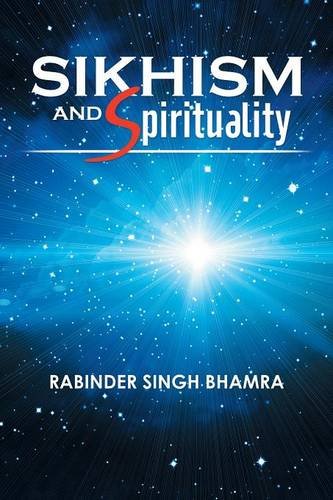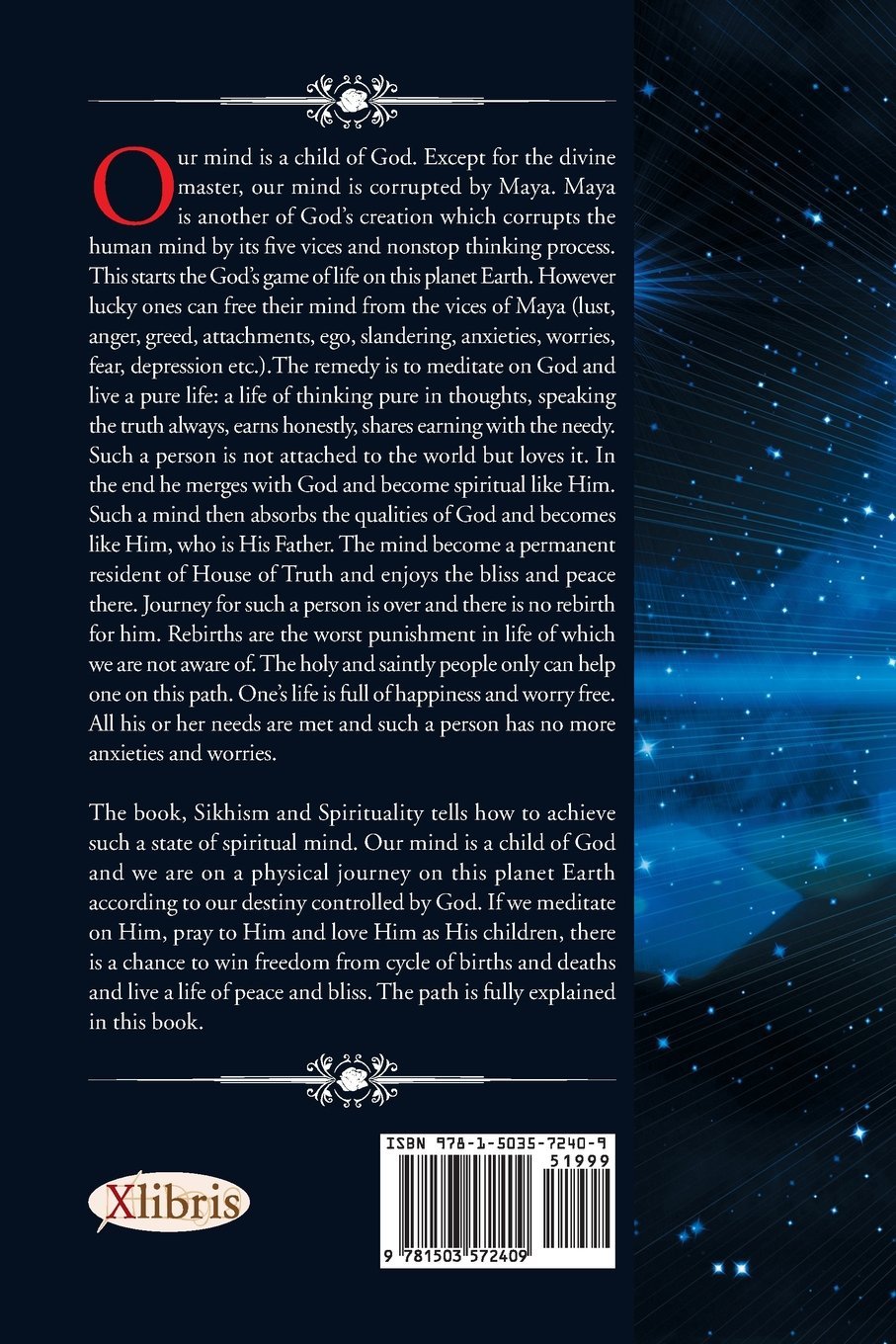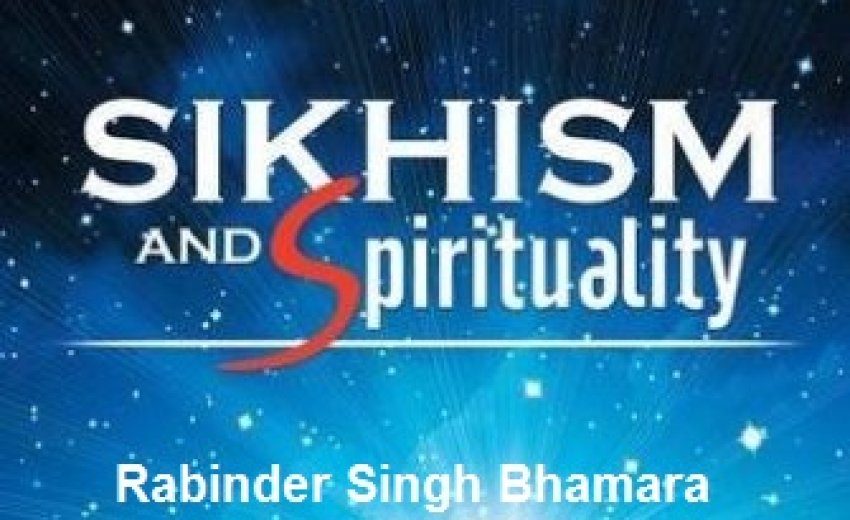Book Review
"Sikhism and Spirituality"
 |
Product details Paperback: 258 pages Publisher: Xlibris (16 July 2015) Language: English ISBN-10: 1503572404 ISBN-13: 978-1503572409 Product Dimensions: 15.2 x 1.7 x 22.9 cm Author: Rabinder Singh Bhamra |
 |
|
About the Author
Rabinder Singh Bhamra was born in 1940 and raised in the city of Amritsar in Punjab, India into an industrial family. He grew up with an interest in the fine arts and finished his college education at Khalsa College, Amritsar with a Bachelor of the Arts. Later, the author did his Honors Degree in Mechanical Engineering from IIT in Bombay, where he worked for six years as a Production and Quality Manager before migrating to Long Island, New York. The author has been living in New York since 1972 with his wife, Balwinder Kaur of Chandigarh. He worked as a Principal Engineer and Quality Manager in microelectronics and electronic components manufacturing with General Instruments Corp. Presently, he is working with County of Nassau as a Project Manager. The author has been involved as a volunteer in the management of the Gurdwara Sikh Cultural Society since 1972 for 19 years until 1991, where he served as a General Secretary, Vice President and Trustee. He was one of the founding members of the Sikh Council of North America in 1978 and helped start the Sikh Day Parade on Baisakhi Day since 1988. He has also helped run the Sikh Studies Program at Columbia University for 10 years. As a community spokesperson, he presented the Sikh religion in interfaith meetings and conferences. He was working with JUS Punjabi T.V. till 2011, the first National Punjabi T.V. Channel in the USA, as a Talk Show Host and Senior Correspondent. He is deeply involved in the spread of Gurmat through writing, lectures, katha, kirtan and TV presentations. The author is also an Honorary Chaplain with the Department of Police, County of Nassau, New York. | ||
Preface by Dr. H S Virk
The author of this book, Rabinder Singh Bhamra, is known in Sikh Diaspora as an Engineer and a Sikh Scholar who got his first degree from the prestigious institute of India, known globally for its brand as IIT, Bombay. After reading his manuscript, I realize that Mr Bhamra has not lost his moorings. He remains steadfast as a practising Sikh of the Guru despite his engagements in worldly affairs. The book has been written with a motive to demolish false propaganda of a few so called intellectuals who want to mislead simple-minded Sikhs by mis-interpreting Gurbani to suit their whims. The author has selected 53 Topics dealing with Sikh religion and culture to project his ideas. I wish the author brings some order in his presentation as the Topics under discussion are arranged in a random order.
In the opening Chapter, the author focusses on Guru Nanak and his mission as follows: “Guru Nanak Dev was commissioned by God to spread His message by singing His glories and sharing the wealth of Naam with humanity as a Satguru, installed by God Himself, the mission for which he spent the rest of his life. For twenty two years starting in 1499 AD Guru Ji travelled on foot almost twenty two thousand miles in all four directions. In each travel, he met the religious leaders of Hindus, Muslims, Sidhas and Yogis from Sumer Mountains in Himalayas to Ceylon, from South China and Assam to Mecca and Turkey.”
What was the mission of Guru Nanak? The author explains: “God gave Guru Nanak, the treasure of Naam to share with others and never asked account for it: "Bhagat bhandaar Guru Nanak kau saunpay. Phir lekhaa mool naa laiaa” (SGGS, p-612). One drop of this nectar of Naam can give liberation to one who takes it and makes him immortal: "Ek boond Gur Amrit deeno taa atal amar na mooaa." (SGGS, p-612). Guru Ji kept distributing this invaluable gift to his lucky Sikhs: "Satgur Sikh ko Naam dhan deh. Gur kaa Sikh vadbhaagee heh." (SGGS, p-286).
The author also cautions us: “Satguru Nanak showed us the path to freedom then and is showing even now in Gurbani. We did get freedom following him. But now we have turned away from him and fallen to our own intellect which is very limited and deals only with three Gunas of Maya. So we are back into slavery of Maya. We have lost our faith in Satguru and Khande Dee Pauhal”.
I find the author has given new meanings to some fundamental concepts of Sikh religion. For example, defining NAAM, the author writes: “Often Naam is confused with Name of God whereas it is God Himself within His created universe. Naam is the Divine-Consciousness, Wisdom, Intelligence, Creative Power, Plan, Will, Order (Hukam), Light (Jyot), Utterance (Sabad), Love, Grace etc. It is everything that God is. So it is the essence of God (Siv) and His extension into Maya (Sakti), His creation, both physically visible and invisible. God created Naam out of Himself.” He used Naam to create His universe and is sitting in each of His creation as Naam and is relishing it. "Appeenay aap saajio aapeenay rachio Naaon. Dooee kudrat saajeeay kar assan ditho chaao." (SGGS, p-463).
Sabad and Anhad Sabad find new explanations in author’s book: “Sabad in Gurbani means the utterance of God. So Anhad Sabad means Divine Utterance which is still going on in the universe.” It is thru Sabad that we connect with Naam and thru Sabad again we unite with God:
"Sabday he Naaon upjay Sabday mail milaaiaa." (SGGS, p-644).
In author’s view Sabad is not same as Gurbani: “Misunderstanding this Sabad as Gurbani, most of current scholars are calling Sri Guru Granth Sahib as Shabad Guru whereas it is Sabad Guru/Gurbani Guru/Satguru. In Gurbani the word Guru, Satguru refers to Naam or God and not Guru Ji themselves. Guru Ji considers Naam and God the same:“Gur Govind Govind Guru hai, Nanak bhed na bhaee” (SGGS, p-442)
Maya is a typical Indian concept which is predominant in Hindu religion. It finds an echo in Sikh scripture also. But like Sabad, which occurs in Sri Guru Granth Sahib and misinterpreted as Gurbani, Maya is the most misunderstood word in Gurbani. The author is at his best to offer his own view point on Maya: “It is the world of Maya we live in; it is the Maya which leads us into problems and it is Maya we have to fight to win freedom and gain union with God. Maya is all the visible creation of God, we live in. God put the world of Maya to work as per His plan. But He installed in the minds an intoxicating love for the world and led the whole world astray:
"Tudh aapai jagat upaaeykai appey dhandhe laeyaa.
Moh thagauly paaeykai tudh apau jagat bhulaaeaa." (SGGS, p-138)However Maya is not an objective reality and leads to duality rather than unity, so that like a mirage the world becomes an end in itself. So Maya is what makes you forget God, produce attachment to the world and duality:
"Eh Maya jit Har visre moh upje bhao dooja laaiaa." (SGGS, p- 921)The author took pains to explain Hukm, Surt, Mind, Sunn, Spirituality, Reincarnation and many other concepts which occur time and again in Sikh scripture. He has elaborated his experience about NAM JAPNA. It seems author has some esoteric knowledge about Naam. He is emphatic about the Sikh practice of repeating name of God as Waheguru: “Naam Japna is the first of the three basic duties of a Sikh, the other two being Kirat Karni and Wand Shakna. Naam Japna relates to the practice of remembering our Creator God and is done by repetitive utterance of God’s Name which is given to us by our Guru Ji. The Name for remembering God given to us by Guru Ji is WAHEGURU”.
According to author: “The biggest hindrance in understanding Gurabni is interpreting Sabad as Gurbani. Sabad in the old Punjabi language means a sound and not written word. When Guru Nanak Ji says "Sabad Guru surat dhun chela", he is not referring to his own uttered Gurbani but the sound of the Divine utterance which one hears on elevated spiritual path. Sabad is the utterance or communication of God with His creation thru His Naam/ Soul.
Science and Religion is one of the most important Chapters of this book. The author is highly critical of the pseudo-scientists who claim to interpret Gurbani logically and scientifically: “Subject of Science and Religion is often brought up for discussion by the scientific minded persons who under its influence are turning atheist. They are afraid to admit that they are atheist but write about God to prove that atheists can also be spiritual. They question the existence of God stating that there is no scientific proof of it. They openly deny the existence of soul and mind which are both extension of God within us. Soul is God Himself: "Atam Ram Ram hai Atam" in all God's creation. Mind is subtle manifestation of Soul or Jot: "Mun too Jot saroop hain." Their opposition to reincarnation and after life is based on their no belief in existence of soul.
The author believes that science has destroyed the faith in God: “As a scientist and engineer myself, I do admire the great achievements of the dedicated work of many a scientist around the world who have contributed to the welfare of humanity at large notwithstanding the side effect of some of their products are very serious and we have to be worried about these. But the biggest side effect of all this has been the evaporation of faith of people on God and spirituality as they have started thinking that they are independent of any control or Hukam of God”.
Interpretation of Gurbani is a challenge for all our Sikh brethren in India and in Diaspora; hence author is conscious of this malady: “Sometimes, we may misinterpret some Gurbani words and it may suit our belief system and may push these understanding onto others, not fair either. Sometimes, we will look up quotes which appear to match our beliefs and quote it without caring in what context Guru Ji had said that, we could be wrong either. Until we have complete understanding of Gurmat and the Game of life what Guru Ji calls ‘Akath Katha’ which really means 'story of our spiritual journey to meet Akal Purakh', we will not be able to interpret Gurbani correctly”.
In my view, the author has a motive and purpose for writing this book to checkmate those writers who are bent upon destroying the aesthetics of Gurbani by creating confusion in the minds of believers in Sikh faith. Author has offered the concluding evidence based on his original research in interpreting concepts of Gurbani and their implications for Sikhism in the modern world. He argues: “Spirituality is questioned by rationalists because they cannot see the spirit, mind or God. So soul is being called DNA, mind the 'Jot Saroop' is being called brain. Brain is just a processer of communication from five sensory organs of our body to mind and orders of our mind to the five work organs of the body to do karmas”.
The author has analyzed the impact of Science on Society in the following way and takes a dig at humanists: “Life on this planet has turned into a far more complicated drama where man trying to depend only on his own intellect has been giving up faith in God and spirituality. People are turning from being a theist to atheist and giving it socially acceptable name of being secular humanist”.
He continues his onslaught on scientists: “Similarly if we consider soul as DNA and since soul is part of Infinite God, then God must be an infinite DNA. So it is very easy to see God because DNA, an organic acid can be seen under a powerful microscope. Since DNA can be altered we have choice to have a designer God. Calling God as energy is making a mockery of Gurmat”.
The author is supportive of implementing Sikh Rehat Maryada (SRM): “Present day Panthic Sikh Rehat Maryada is based on all different rehatnamas written at the time of Guru Ji and later Sikhs and is approved by Khalsa Panth with the seal of Akal Takhat. This is the Rehat or discipline for all Sikhs and guides us on all aspects of temporal life of the Sikhs at individual and societal level whereas Gurbani of Sri Guru Granth Sahib elaborates on our spiritual source and how to achieve our spiritual goals to realize ourselves and connect with our Source, Parmatama thru Naam. Whereas SRM gives basic guidelines for how to live our life as a Sikh, Gurbani fully guides the seeker to the spiritual goal. Both are equally important for a Sikh to live a successful life”.
There is a Chapter titled “Keeping Your Children Sikh” where the author has suggested a Ten Point Program for the Parents to motivate their children to Sikh faith. I found the 6th point as follows: “At community level we should have a Punjabi school in the Gurdwara where they can learn the language, Sikh history and also should learn to do kirtan. The kids should be allowed to participate in the Sunday program. A special program for the kids only, be arranged once a month in English where they do all the service: Kirtan, Katha and Ardaas. This will encourage their attendance, learning process and be trained to further participate in the management of the Gurdwara.”
A Chapter on Sikhs and their Religion is interspersed in the middle of this book, which looks odd. It has no relevance here and needs to be written in a book form separately. I will recommend its deletion from the book.
Hardev Singh Virk
Professor Emeritus
Eternal University, Baru Sahib, HP, India
Ex-Director, Earthquake Research Center,
Guru Nanak Dev University, Amritsar.

